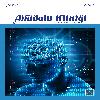Thiol/Disulphide Homeostasis and Oxidative Stress Parameters in Children and Adolescents with Attention Deficit/ Hyperactivity Disorder
Dikkat Eksikliği Hiperaktivite Bozukluğu Olan Çocuk ve Ergenlerde Tiyol/Disülfit Dengesi ve Oksidatif Stres Parametreleri
___
- American Psychiatric Association. Diagnostic and Sta- tistical Manual of Mental Disorders, 5. ed. (DSM-5). USA: American Psychiatric Publishing; 2013.
- Faraone S, Biederman J. Pathophysiology of attention- deficit/hyperactivity disorder. In: Davis KL, Charney D, Coyle JT, Nemeroff C (ed.), Neuropsychopharmacolgy: The Fifth Generation of Progress. Philadelphia: Lippin- cott, Williams and Wilkins; 2002:577-96.
- Meehan KB, Ueng-McHale JY, Reynoso JS, Harris BH, Wolfson VM, Gomes H, et al. Self-regulation and in- ternal resources in school-aged children with ADHD symptomatology: An investigation using the Rorschach inkblot method. Bull Menninger Clin. 2008;72(4):259- 82.
- Davies KJ. Oxidative stress, antioxidant defenses, and damage removal, repair, and replacement systems. IUBMB life. 2000;50(4-5):279-89.
- Sies H. Oxidative stress: oxidants and antioxidants. Exp Physiol. 1997;82(2):291-5.
- Haddad JJ. Oxygen sensing and oxidant/redox-related pathways. Biochem Bioph Res Co. 2004;316(4):969-77.
- Ceylan M, Sener S, Bayraktar AC, Kavutcu M. Oxida- tive imbalance in child and adolescent patients with attention-deficit/hyperactivity disorder. Prog Neuro- Psychoph. 2010;34(8):1491-4.
- Bulut M, Selek S, Savas HA, Yuce M, Ekici G. Malondi- aldehyde levels in adult attention-deficit hyperactivity disorder. J Psychiatr Neurosci. 2007;32(6):435-8.
- Bulut M, Selek S, Bez Y, Kaya MC, Gunes M, Karababa F, et al. Lipid peroxidation markers in adult attention deficit hyperactivity disorder: new findings for oxidative stress. Psychiat Res. 2013;209(3):638-42.
- Oztop D, Altun H, Baskol G, Ozsoy S. Oxidative stress in children with attention deficit hyperactivity disorder. Clin Biochem. 2012;45(10):745-8.
- Spahis S, Vanasse M, Bélanger SA, Ghadirian P, Grenier E, Levy E. Lipid profile, fatty acid composition and pro- and anti-oxidant status in pediatric patients with atten- tion-deficit/hyperactivity disorder. Prostag Leukotr Ess. 2008;79(1):47-53.
- Joseph N, Zhang-James Y, Perl A, Faraone SV. Oxida- tive stress and ADHD: a meta-analysis. J Atten Disord. 2015;19(11):915-24.
- Lopresti AL. Oxidative and nitrosative stress in ADHD: possible causes and the potential of antioxidant-targeted therapies. Atten Defic Hypeact Disord. 2015;7(4): 237- 47.
- Sezen H, Kandemir H, Savik E, Basmacı Kandemir S, Kilicaslan F, Bilinc H, et al. Increased oxidative stress in children with attention deficit hyperactivity disorder. Redox Rep. 2016: 1-6 [Epub].
- Kul M, Unal F, Kandemir H, Sarkarati B, Kilinc K, Kan- demir SB. Evaluation of Oxidative Metabolism in Child and Adolescent Patients with Attention Deficit Hyperac- tivity Disorder. Psychiatry Investig. 2015;12(3):361-6.
- Alpak G, Selek S, Bulut M, Bülbul F, Ünal A, Vırıt O, et al. High catalase and low thiol levels in adult-ADHD pa- tients. Klin Psikofarmakol B. 2014; 24(2):128-34.
- Kaufman J, Birmaher B, Brent D, Rao U, Flynn C, Moreci P, et al. Schedule for affective disorders and schizophre- nia for school-age children-present and lifetime version (K-SADS-PL): initial reliability and validity data. J Am Acad Child Psy. 1997;36(7):980-8.
- Gökler B, Ünal F, Pehlivantürk B, Kültür EÇ, Akdemir D, Taner Y. Reliability and validity of schedule for af- fective disorders and schizophrenia for school age children-present and lifetime version-turkish version (K-SADS-PL-T). Turk J Child Adolesc Ment Health. 2004;11(3):109-16.
- Erel O. A new automated colorimetric method for measuring total oxidant status. Clinical biochem. 2005;38(12):1103-11.
- Erel O. A novel automated method to measure total an- tioxidant response against potent free radical reactions. Clinical biochem. 2004;37(2):112-9.
- Ellman GL. Tissue sulfhydryl groups. Arch Biochem Biophys. 1959;82(1):70-7.
- Hu M-L. Measurement of protein thiol groups and gluta- thione in plasma. Method Enzymol. 1993;233:380-5.
- Guney A, Akar M, Karaman I, Oner M, Guney B. Clini- cal outcomes of platelet rich plasma (PRP) as an adjunct to microfracture surgery in osteochondral lesions of the talus. Knee Surg Sport Tr A. 2015;23(8):2384-9.
- Erel O, Neselioglu S. A novel and automated assay for thiol/disulphide homeostasis. Clinical biochem. 2014;47(18):326-32.
- Ozler S, Erel O, Oztas E, Ersoy AO, Ergin M, Sucak A, et al. Serum thiol/disulphide homeostasis in preeclampsia. Hypertens pregnancy. 2015;34(4):474-85.
- Karababa İF, Savas SN, Selek S, Cicek E, Cicek EI, Aso- glu M, et al. Homocysteine levels and oxidative stress pa- rameters in patients with adult ADHD. J Atten Disord. 2014: 1087054714538657 [Epub].
- Selek S, Bulut M, Ocak AR, Kalenderoğlu A, Savaş HA. Evaluation of total oxidative status in adult attention deficit hyperactivity disorder and its diagnostic implica- tions. J Psychiat Res. 2012;46(4):451-5.
- Ruchi K, Kumar A, Sunil G, Bashir A, Prabhat S. Anti- oxidant activity in children with ADHD-a comparison in untreated and treated subjects with normal children. Int Med J Malaysia. 2011;10(1):31-5.
- Çelik VK, Ersan E, Ersan S, Bakir S, Dogan O. Plasma catalase, glutathione-s-transferase and total antioxi- dant activity levels of children with attention deficit and hyperactivity disorder. Adv Biosci Biotechnol. 2013;4(2):183-7.
- Varol Tas F, Guvenir T, Tas G, Cakaloz B, Ormen M. Ni- tric oxide levels in disruptive behavioral disorder. Neu- ropsychobiology. 2006;53(4):176-80.
- Ho E, Galougahi KK, Liu C-C, Bhindi R, Figtree GA. Biological markers of oxidative stress: applications to cardiovascular research and practice. Redox Biol. 2013;1(1):483-91.
- Lazarevic-Pasti T, Leskovac A, Vasic V. Myeloperoxi- dase Inhibitors as Potential Drugs. Curr Drug Metab. 2015;16(3):168-90.
- ISSN: 2149-5254
- Yayın Aralığı: Yılda 3 Sayı
- Başlangıç: 1933
- Yayıncı: Hayat Sağlık ve Sosyal Hizmetler Vakfı
Hemşirelerin Malpraktis ile İlgili Algı, Tutum ve Davranışları
Aliye BULUT, Hatice OĞUZHAN, Bahadır TERCAN, Çağla YİĞİTBAŞ, Aziz BULUT
Netherton Sendromu ve Mental Retardasyon Birlikteliği
Omer Faruk OZER, Selcuk UZUNER, Sehabettin SELEK, A Cahid ORENGUL, Vahdet GORMEZ
The Incidence of Pericolonic Tumor Deposits in Colorectal Cancer
Gurhan BAS, Kerem TOLAN, Tunc EREN, Orhan ALİMOGLU, Tamador SHAMAİLEH, Ali KİLİC
Sol Ana Koroner Arter Çıkış Anomalisi Olan Hasta
Primer Dismenorede Tedavi Yaklaşımları
Ayşe Topcu AKDUMAN, Oya Çimen BUDUR
İnsan Üzerindeki Deneyler ve İlgili Etik-Yasal Metinler
Ersin BEYAZCİCEK, Handan ANKARALİ, Serif DEMİR, Seyit ANKARALİ
Phenomenology and Psychiatric Comorbidity in Pediatric Bipolar Disorde
